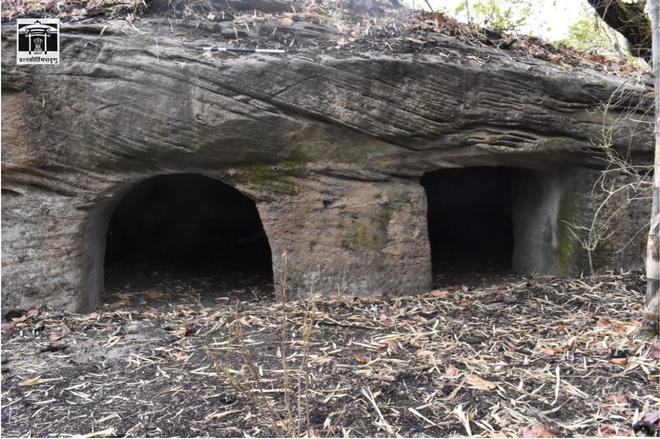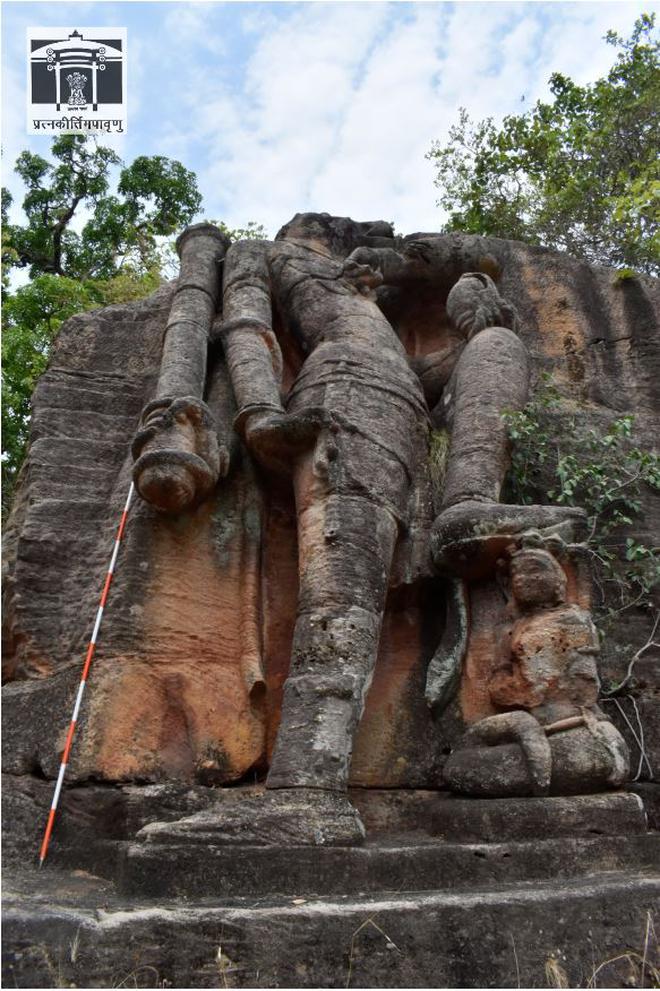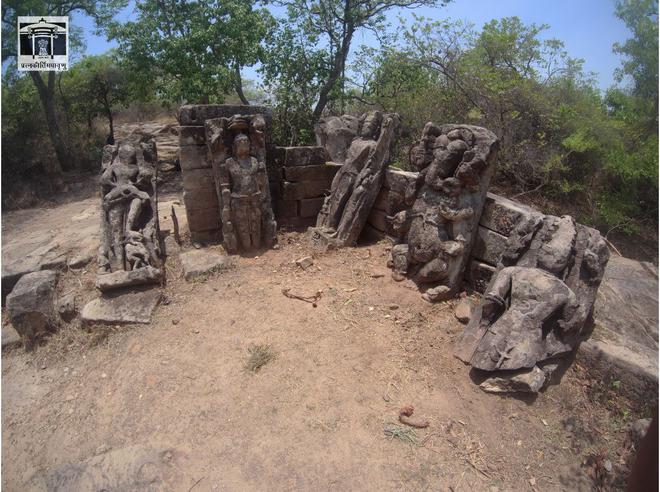The Archaeological Survey of India (ASI) earlier this year discovered Buddhist caves and stupas, and Brahmi inscriptions, dating back to the 2nd century, and Hindu temples from the 9th-11th centuries, and possibly the world’s largest Varaha sculpture also dating to the same period, at the Bandhavgarh Tiger Reserve in Madhya Pradesh.
The Varaha sculpture is among the many monolithic sculptures of the 10 incarnations of Lord Vishnu that were discovered by an ASI at the national park earlier this year. The exploration took place 84 years after the last such effort in 1938.
“A total of 46 new sculptures have come to light and have been reported,” Shivakant Bajpai, Superintending Archaeologist, Jabalpur Circle, Madhya Pradesh, who led the exploration team, said here on Wednesday. Ten sculptures had already been found and reported in the previous ASI survey of 1938, he said.
Dr. Bajpai said the exploration in the Bandhavgarh area is being carried out in three phases, the first of which was completed in the Tala range in May-June this year. In the next two phases, the Khitouli and Magadhi ranges of the tiger reserve will be explored.
The ASI team discovered 26 mostly Buddhist caves dating back to the 2nd and 5th centuries. The caves and some of their remains had ‘Chaitya’ (rounded) doors and stone beds typical of Mahayana Buddhism sites. This discovery brings the total number of caves found in Bandhavgarh to 76, as 50 are already in the records since the last survey.

Apart from this, the ASI team found 24 inscriptions in Brahmi text, all dating back to the 2nd-5th centuries. The inscriptions mention sites such as Mathura and Kaushambi, and Pavata, Vejabharada and Sapatanaairikaa. The kings they mention include Bhimsena, Pothasiri and Bhattadeva.

The remains of 26 temples date to the Kalachuri period between 9th-11th centuries. In addition to this, two Saiva mutts have also been documented. The Kalachuri dynasty, which spread over parts of Gujarat, Maharashtra and Madhya Pradesh, is also associated with the earliest Ellora and Elephanta cave monuments.
Some remains of the Gupta period, such as door jambs and carvings in caves, have also been found.

Observing that the coming to light of these archaeological remains has added a new chapter to the history of the region also known as Baghelkhand, ASI Director and spokesperson Vasant Swarnkar said: “We certainly need to conserve this, but the first step has to be documentation,” adding, “Though we want to explore faster, the problem is with permissions as it is a reserved forest area.”







